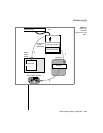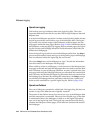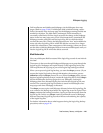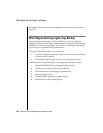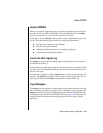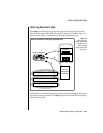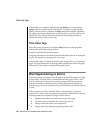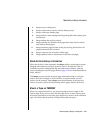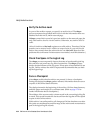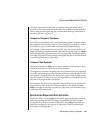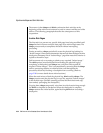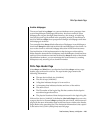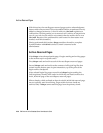
Data Consistency, Recovery, and Migration 4-31
Read Archive History Information
5. tbtape forces a checkpoint.
6. tbtape synchronizes activity with the tbinit process.
7. tbtape writes tape header page.
8. tbtape archives reserved pages and logical log files that contain open
transactions.
9. tbtape defines the archive criteria.
10. tbtape searches by chunk for disk pages that meet archive criteria
and archives those pages.
11. tbtape monitors pages written to the physical log and archives all
pages that meet archive criteria.
12. tbtape writes an end-of-archive trailer page.
13. tbtape updates archive information in the reserved pages.
Read Archive History Information
When the archive is first requested, the tbtape utility process begins assem-
bling the information it needs to create an archive. It reads the value of
TAPEDEV from the configuration file and reads archive history from the
active root dbspace reserved page. (Refer to page 2-102 for moredetails about
PAGE_ARCH.)
The tbtape process uses the reserved-page information first to verify the
archive level (for example, a level-0 archive is required before a level-1
archive can be created). Later, tbtape uses the timestamp of the previous
archive to set the criteria for determining which pages must be archived.
Mount a Tape on TAPEDEV
When you request an archive, you are prompted to mount a tape on the
archive tape device and to verify that the tape device is ready. Do not store
more than one archive on the same tape; begin every archive with a different
tape. (It is likely that an archive will span more than one tape.)



